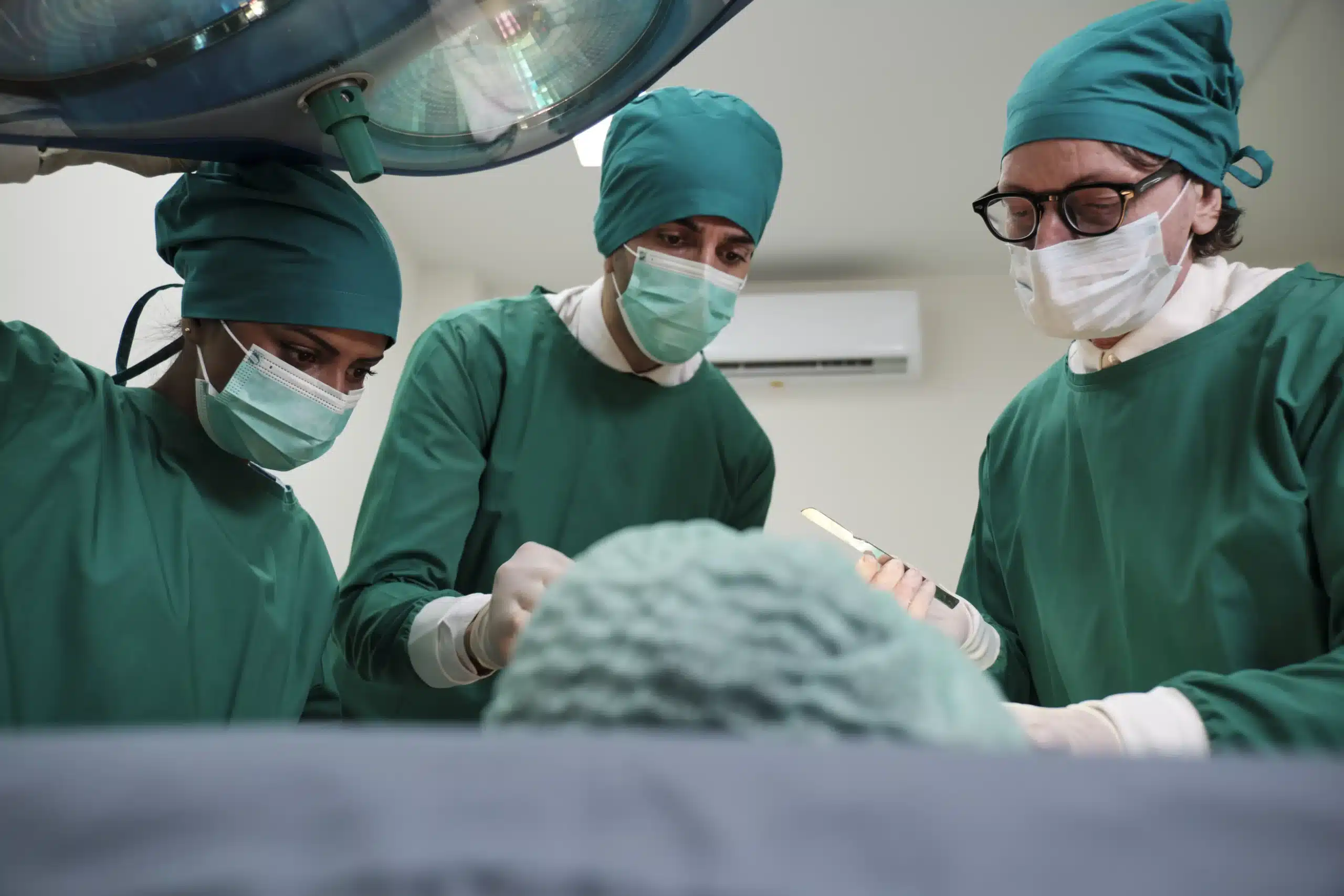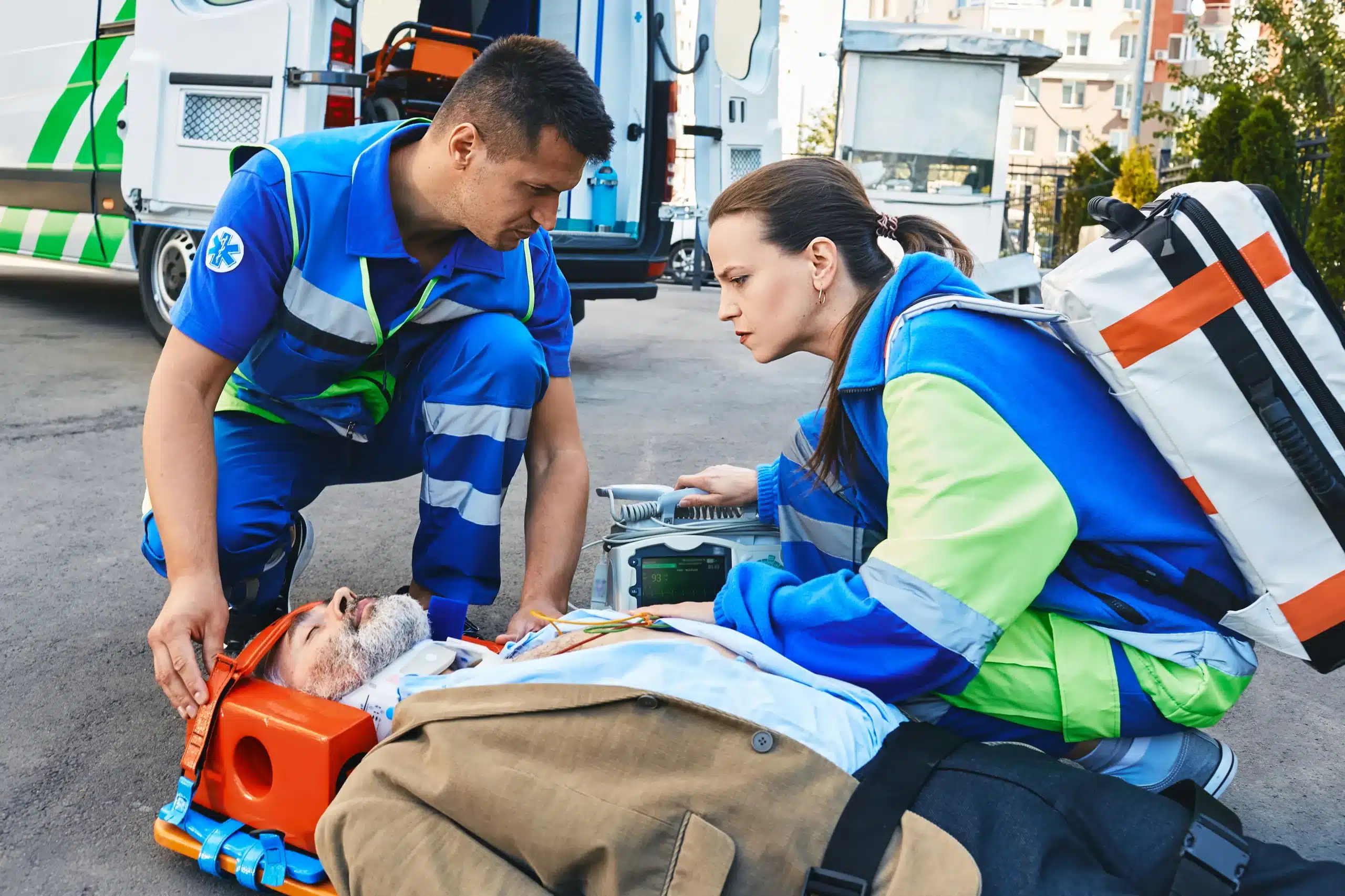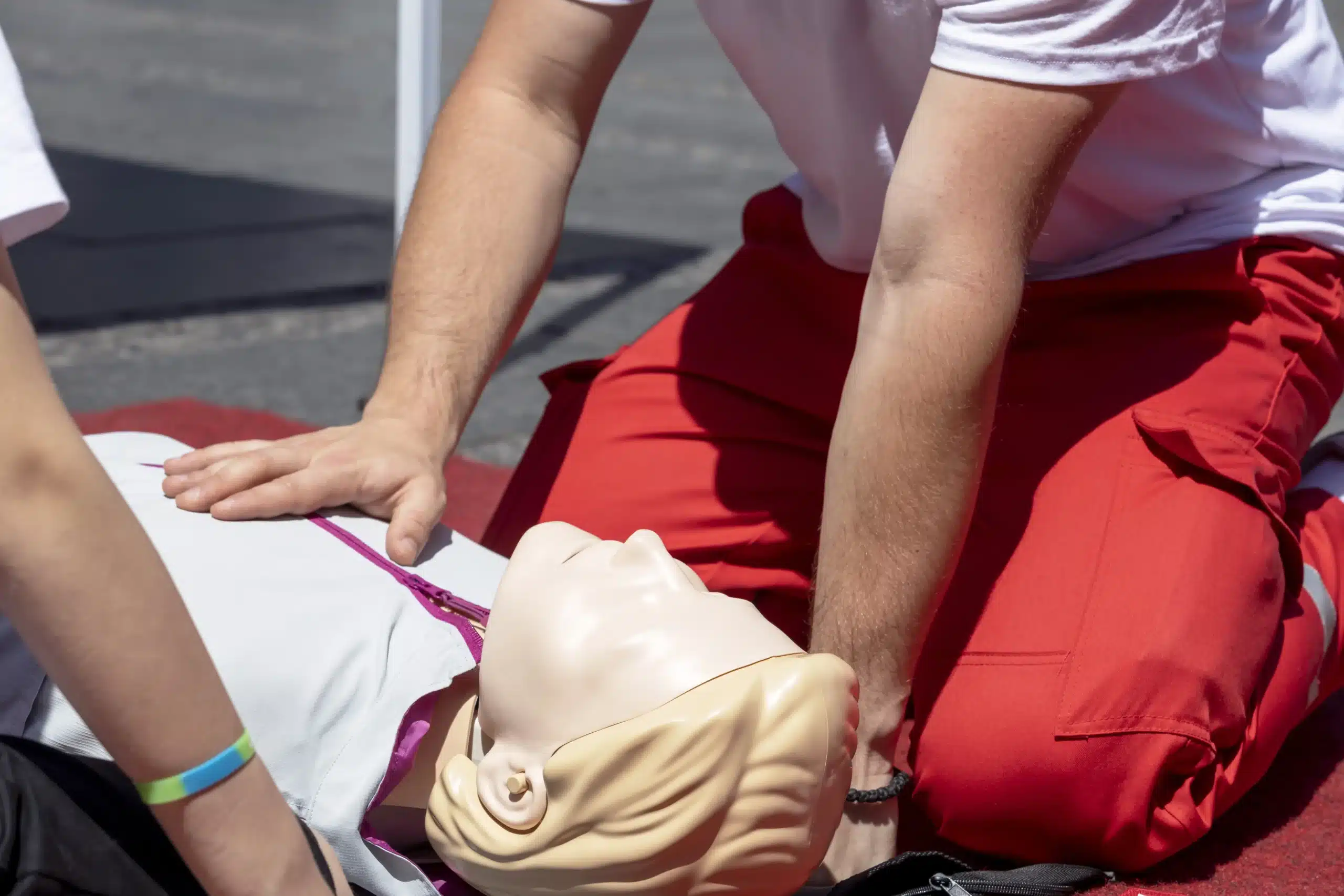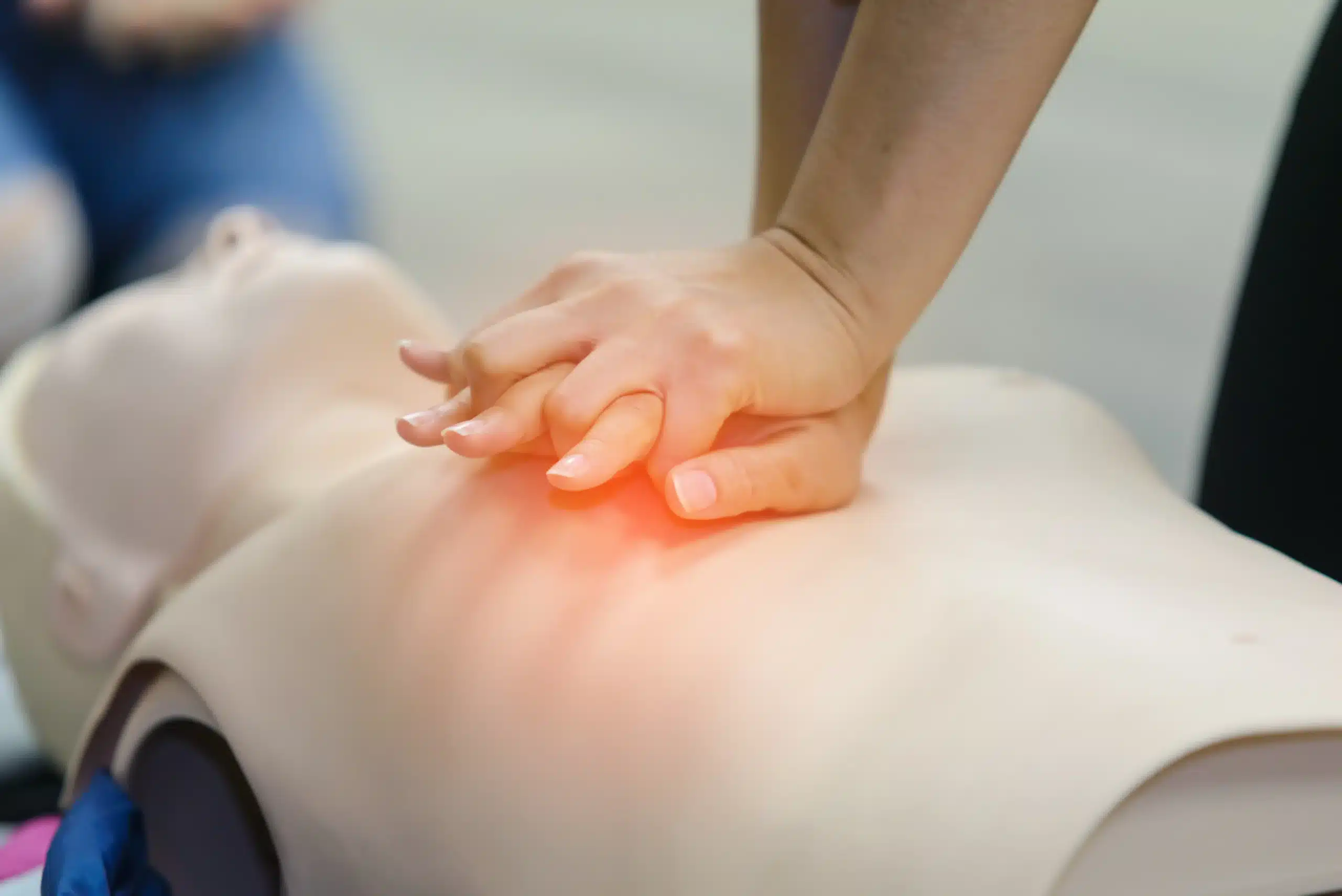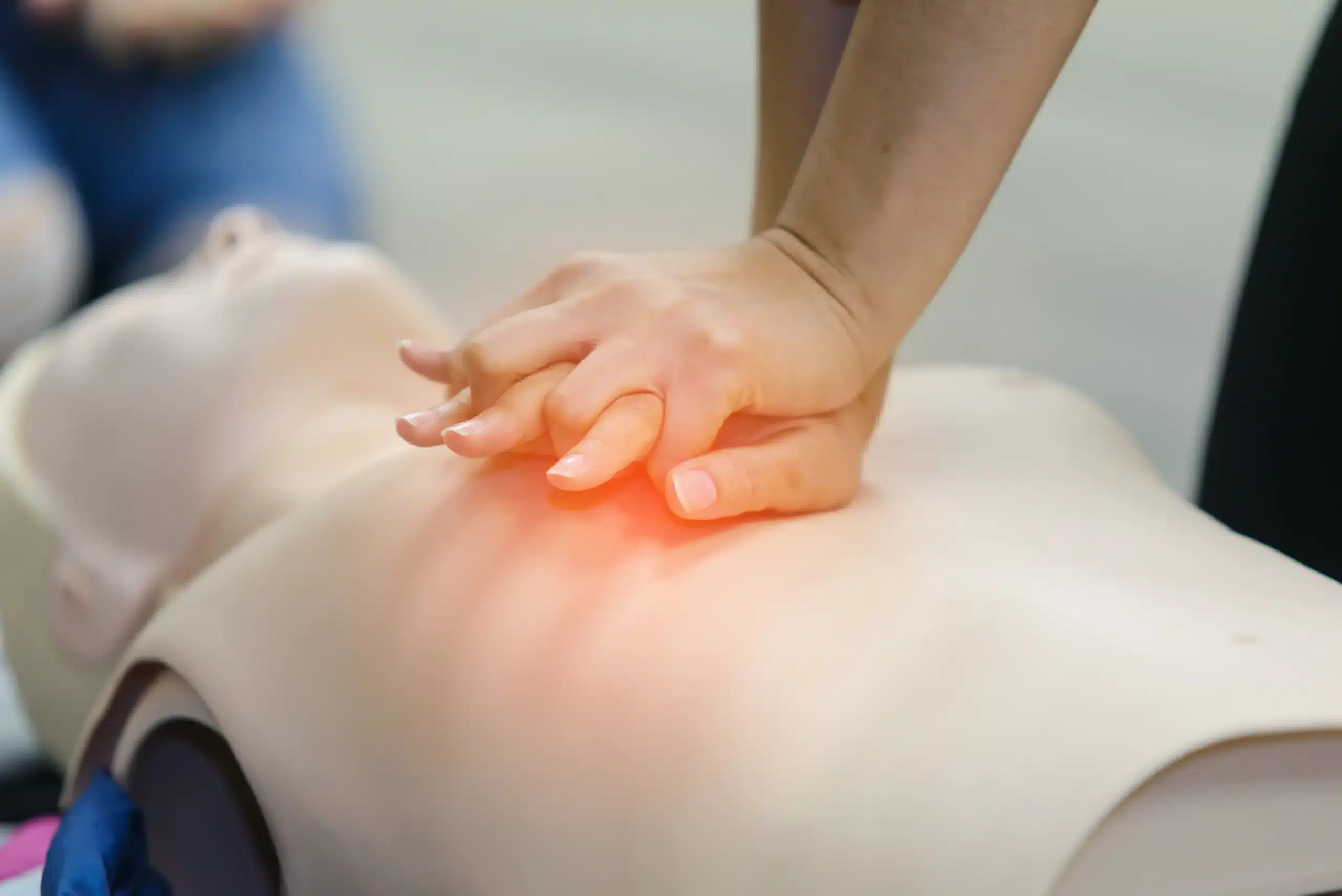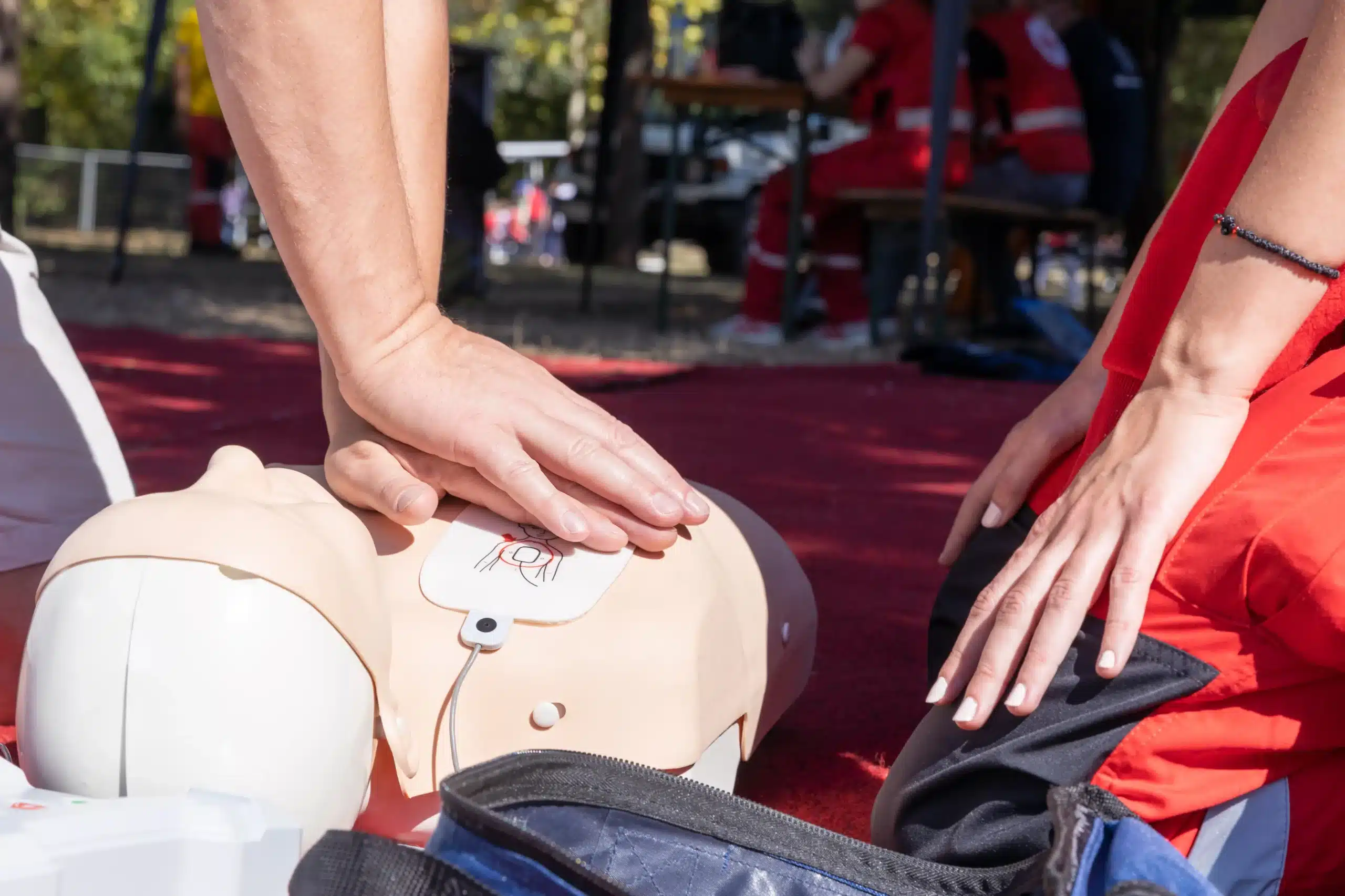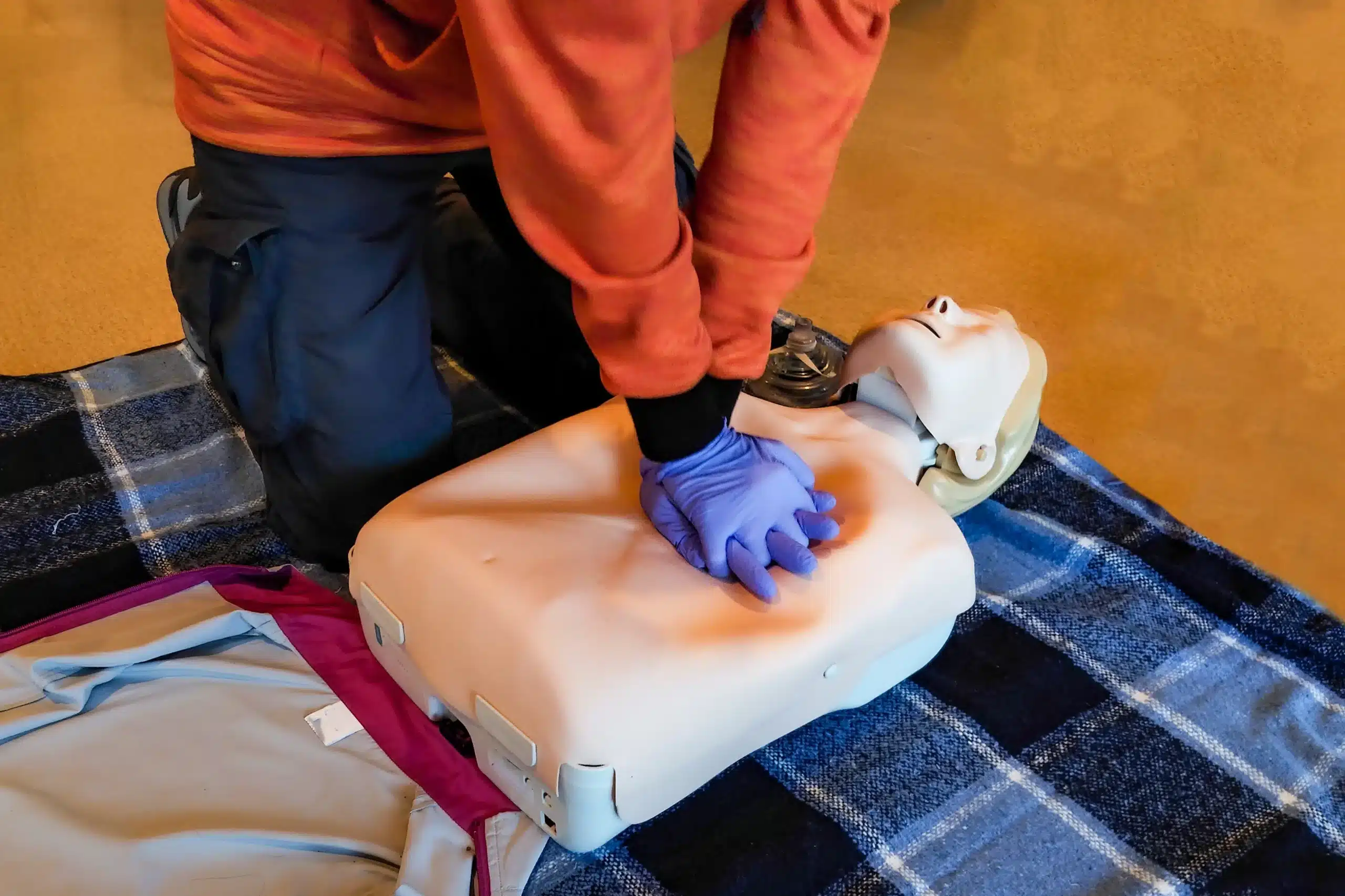Accidents happen, especially with children. A fall on the playground, a choking incident at dinner, a sudden allergic reaction—these scenarios can be terrifying for any parent or caregiver. But what if you knew exactly what to do? Learning pediatric CPR and first-aid in Palo Alto empowers you to respond quickly and confidently in such situations. This guide will walk you through everything you need to know about pediatric CPR and first-aid training in Palo Alto, from the importance of these skills to finding the right course and instructor. We’ll also discuss the certification process, costs, and the long-term value of this training.
Key Takeaways
- Be prepared for childhood emergencies: Pediatric CPR and first-aid training equips you with the skills to confidently handle a range of situations, from minor injuries to life-threatening events. Seek out reputable providers like Safety Training Seminars for comprehensive training.
- Find the right training format for you: Choose from in-person, online, or blended learning options to fit your schedule and preferred learning style. Prioritize courses that offer hands-on practice and are led by experienced medical professionals.
- Maintain your skills through ongoing practice: Regular refresher courses and additional resources help keep your knowledge and skills current, ensuring you’re always ready to respond effectively in an emergency.
What is Pediatric CPR and First-Aid?
Pediatric CPR and first-aid training gives parents, caregivers, and professionals the skills to respond to emergencies involving infants and children. It covers how to recognize and manage life-threatening situations like breathing and cardiac emergencies, plus how to handle common childhood injuries and illnesses.
This specialized training addresses the unique needs of young children, differing significantly from adult CPR. For example, techniques for checking for a pulse and delivering compressions are adapted for smaller bodies. The Heartsaver Pediatric First Aid CPR AED course from the American Heart Association is specifically designed for childcare providers and anyone responsible for children’s safety. It covers a wide range of emergencies, from choking and drowning to cardiac arrest, preparing participants to act quickly and confidently. Knowing pediatric first aid also means you can address issues like burns, cuts, and allergic reactions. For those interested in adult CPR, our website offers information on BLS CPR and ACLS training for advanced cardiovascular life support. Learning these skills offers immense peace of mind, empowering you to provide immediate assistance in a crisis until professional medical help arrives. This timely intervention can significantly improve a child’s outcome.
Why Pediatric CPR and First-Aid Matter
Knowing what to do in a medical emergency involving a child can be life-saving. Pediatric CPR and first-aid training equips parents, caregivers, and professionals with the skills to respond effectively in such situations. It’s about being prepared and having the confidence to act quickly when seconds count. This knowledge can dramatically improve outcomes and even save a child’s life.
Common Misconceptions
Many people believe they’ll never need these skills or that someone else will step in. Surprisingly, a significant number of adults aren’t comfortable performing CPR. Studies show only about half of Americans know how to perform it. Even fewer parents—around 32%—feel confident they could perform CPR on their child. This hesitation can have serious consequences, delaying crucial intervention during emergencies. Don’t let these misconceptions prevent you from learning these essential skills. CPR training is accessible and empowers anyone to make a difference.
Real-Life Applications
While we hope never to face these situations, accidents involving children happen. From choking incidents to near-drowning experiences, being prepared is key. Learning pediatric CPR and first-aid provides the tools to handle emergencies involving children effectively. Bystander CPR, especially when administered immediately, has been shown to improve survival rates in children. These skills aren’t just for medical professionals; they’re valuable for anyone who interacts with children regularly. Think of the peace of mind you’ll gain knowing you can provide immediate care in a critical situation. Pediatric first-aid training covers everything from treating minor injuries to managing more serious conditions, making you a valuable resource in any childcare setting.
Top Pediatric CPR and First-Aid Training Providers in Palo Alto
Finding the right pediatric CPR and first-aid training can feel overwhelming. To simplify your search, we’ve compiled a list of reputable providers in and around Palo Alto. Remember to check their websites for the latest course schedules and offerings.
Safety Training Seminars
Safety Training Seminars offers a range of CPR and first-aid courses, including certification in BLS, ACLS, and PALS. With a focus on thorough training and client satisfaction, they’re a good option for both individuals and groups. Conveniently located in Palo Alto, they also serve nearby Redwood City and Menlo Park. See their website for details on their low price guarantee and group discounts.
Oshman Family JCC (OFJCC)
The Oshman Family JCC (OFJCC) offers a blended learning Adult and Pediatric First Aid/CPR/AED course. This program teaches essential lifesaving skills for emergencies involving adults, children, and infants. It’s a practical choice for families and caregivers looking for comprehensive training. Visit their website for more information.
In-Home CPR
In-Home CPR brings the training directly to you, with CPR, BLS, First Aid, and ACLS certification courses available at your home or office. Their team of experienced EMTs, paramedics, and RNs provides personalized instruction. Explore their in-home training options to learn more.
American Red Cross
The American Red Cross is a well-known provider of first-aid and CPR training, with a variety of courses including some specifically for parents. With both online and in-person classes, they offer flexible learning options.
Adams Safety Training
Adams Safety Training provides CPR and first-aid training programs designed for caregivers. Their Pediatric First Aid/CPR courses give caregivers the skills they need to handle emergencies involving infants and children. Visit their website for more details.
Course Formats and Expectations
Choosing the right course format is the first step. Let’s break down the different options for pediatric CPR and first-aid training, so you can find what works best for your schedule and learning style.
In-Person Training
In-person classes offer a hands-on learning experience, perfect for those who thrive in a traditional classroom setting. You’ll work directly with certified instructors and get real-time feedback. In-person CPR training is available throughout Palo Alto, often with no minimum number of students required. This makes it a convenient option for individuals or small groups, allowing for personalized attention and immediate clarification of any questions.
Online Courses
Online courses provide flexibility for busy schedules. You can cover essential knowledge and theory at your own pace with the online portion of blended learning. This format is ideal for refreshing your skills or fitting training around other commitments. Many online courses are designed to meet the specific requirements of various professions, including childcare providers.
Blended Learning Options
Blended learning combines the best of both worlds. You’ll complete online coursework before attending an in-person skills session. This approach reinforces learning and allows you to practice techniques under the guidance of an expert. It’s a structured yet adaptable way to gain comprehensive skills and knowledge.
Course Content and Skills
Pediatric CPR and first-aid courses cover a range of essential topics. You’ll learn basic life support techniques, how to use an automated external defibrillator (AED), and how to treat common childhood injuries and illnesses. These courses also teach emergency response strategies, empowering you to act quickly and confidently in a crisis.
Hands-On Practice and Simulations
Hands-on practice is a crucial part of CPR and first-aid training. You’ll work with manikins and participate in simulations to develop muscle memory and practical skills. This realistic training environment helps you build confidence and prepares you for real-life emergencies. Hands-on components are often integrated into both in-person and blended learning formats.
Certification Process
After successfully completing your chosen course, you’ll receive a certification, often valid for two years. This certification demonstrates your competence in pediatric CPR and first-aid and may be required for certain professions. Digital certificates are commonly provided for easy access and record-keeping. You can find certification details from your chosen training provider.
Instructor Qualifications and Expertise
Knowing who’s teaching you is just as important as what you’re learning. When choosing a Pediatric CPR and First Aid course, the instructor’s qualifications and experience play a huge role in the quality of training you’ll receive. Look for courses led by experienced professionals with a strong background in emergency medical care.
EMTs, RNs, and Paramedics as Instructors
Instructors who are EMTs, Registered Nurses (RNs), or Paramedics bring real-world experience to the classroom. They’ve encountered various medical emergencies firsthand, giving them practical insights that go beyond textbook knowledge. This experience allows them to provide relevant examples, answer your questions effectively, and offer a deeper understanding of pediatric emergencies. Safety Training Seminars prioritizes instructors with these qualifications, ensuring participants learn from seasoned professionals. This hands-on expertise can make a significant difference in your confidence and preparedness.
Ongoing Training and Updates
The medical field is constantly evolving, with new research and updated guidelines emerging regularly. It’s crucial for instructors to stay current with these advancements to provide the most effective training. Look for training providers who emphasize ongoing training and updates for their instructors. This commitment ensures they’re teaching the latest techniques and best practices in pediatric CPR and First Aid. The American Academy of Pediatrics highlights the importance of continuous training for maintaining high-quality CPR skills, especially in pediatrics. Knowing your instructor is up-to-date with the latest guidelines will give you confidence in the quality of your training.
Costs, Discounts, and Training Value
Knowing the price and overall value of Pediatric CPR and First-Aid training is essential when choosing a course. Let’s break down typical costs, explore potential discounts, and discuss the long-term value.
Pricing Breakdown
Pediatric CPR and First-Aid training costs vary depending on the provider, course format (in-person or online), and curriculum depth. Expect to invest between $75 and $150 for a comprehensive course covering CPR and First-Aid techniques for infants and children. Safety Training Seminars offers CPR, BLS, ACLS, PALS, and First-Aid classes daily in Palo Alto and over 60 other Northern California cities, making it easy to find a class that fits your schedule. This investment provides invaluable, potentially life-saving skills.
Group and Early Registration Discounts
Many training providers offer discounts for group registrations, a cost-effective option for families, schools, or community groups. Contact providers like Safety Training Seminars to inquire about group discounts and tailor a training session to your needs. Some providers also offer early bird discounts, so registering in advance can save you money.
Membership Benefits
Some organizations, like the American Heart Association, offer memberships that may include training course discounts. Safety Training Seminars is an official American Heart Association CPR Training Center and is also licensed to provide EMSA-certified Pediatric CPR and First-Aid. This affiliation ensures high-quality training and may offer access to additional resources. Explore membership options to see if they align with your training goals.
Certification Benefits for Parents, Caregivers, and Professionals
Getting certified in pediatric CPR and first-aid isn’t just about checking a box; it’s about equipping yourself with skills that can make a real difference. Whether you’re a parent, caregiver, or professional, the benefits extend far beyond the classroom.
Improve Child Safety at Home and in Childcare
As a parent or caregiver, your priority is the safety and well-being of the children you look after. Knowing how to respond effectively in an emergency can significantly improve child safety at home and in childcare settings. Accidents happen, and having the skills to react quickly and confidently can be life-saving. Pediatric CPR and first-aid training empowers you with the knowledge to handle various situations, giving you peace of mind knowing you’re prepared.
Advance Your Career
For many professionals, CPR and first-aid certification is a job requirement or a significant advantage. Fields like healthcare, education, and childcare often seek candidates with these credentials. CPR training demonstrates your commitment to safety and your ability to handle critical situations, making you a more valuable employee. Even if it’s not mandatory, having these skills can create opportunities and enhance your professional profile. It shows initiative, a quality employers value.
Build Confidence in Emergencies
It’s natural to feel unsure in a crisis. But with proper training, you can replace fear with confidence. Knowing you can respond effectively in an emergency changes your mindset. CPR and first-aid certification provides the tools and knowledge to assess situations calmly and take action. This confidence benefits you and reassures those around you, creating a sense of security and preparedness. It’s about knowing you can handle whatever comes your way.
Choose the Right Pediatric CPR and First-Aid Course
Choosing the right pediatric CPR and first-aid course can feel overwhelming with so many options available. Focus on a few key factors to find the perfect fit for your needs. Think about your priorities: Is it the course format, the instructor’s experience, or the location? Let’s break down how to make the best decision.
Key Features
Look for a course covering essential skills like infant and child CPR, choking relief, and basic first aid for common childhood injuries. Safety Training Seminars offers American Heart Association (AHA) certified classes that cover all these areas, giving you a well-rounded skillset. Hands-on practice is crucial, so prioritize courses that include training with manikins and simulations. Safety Training Seminars emphasizes this practical approach. Many providers now offer blended learning, combining online modules with in-person skills sessions. This format offers flexibility for busy schedules. Most courses run between two and four hours.
Address Common Concerns
It’s natural to feel hesitant about your ability to perform CPR, especially on a child. Many parents share this feeling. Statistics show that only about a third of parents feel confident performing CPR on their child, despite thousands of children experiencing out-of-hospital cardiac arrests each year. Even among the general population, many adults report not knowing how to perform CPR. A quality pediatric CPR and first-aid course will address these concerns, building your confidence through practice and expert guidance. Remember, any training is better than no training.
Scheduling and Accessibility
Finally, consider the logistics. Do you prefer a weekend class or an evening session? Safety Training Seminars offers daily classes in Palo Alto and over sixty other Northern California cities. Blended learning options provide additional flexibility. Check if the instructors are experienced medical professionals, such as EMTs, RNs, or paramedics. This ensures you’re learning from qualified experts. In-Home CPR, for example, highlights its team of experienced instructors. By considering these factors, you can choose a course that fits your schedule and learning style.
Prepare for Your Pediatric CPR and First-Aid Training
Getting ready for your pediatric CPR and first-aid training involves more than just signing up. A little preparation beforehand can make a big difference in how much you get out of the experience. Here’s how to get ready:
What to Bring
CPR and first-aid certification classes in Palo Alto are designed to be accessible and informative, so there’s not much you need to bring. Comfortable clothing is a must since you’ll be actively practicing skills. Bring a notebook and pen to jot down notes, though most classes offer printed materials. A water bottle is also a good idea to stay hydrated, especially during hands-on practice.
Mental Preparation
It’s natural to feel a little apprehensive, especially when dealing with a topic like pediatric emergencies. Know that thousands of parents just like you take these courses every year. The goal is to equip you with the skills and confidence to handle emergencies, not to make you feel overwhelmed. Remember why you signed up: to learn how to help a child in need. That focus can help you approach the training with a positive mindset. It’s worth noting that while many parents recognize the importance of CPR, surprisingly few feel prepared to perform it on a child. This training aims to bridge that gap.
Follow-Up Resources and Refresher Courses
Your pediatric CPR and first-aid training is a great first step, but it’s not a one-time thing. The skills you learn can fade over time, so staying current is key. Many providers offer refresher courses to help you maintain your skills. Take advantage of these opportunities to keep your knowledge fresh and your confidence high. Remember, these courses cover a wide range of emergencies, from breathing difficulties to cardiac events in infants, children, and adults, so ongoing learning is essential. You might also want to explore additional resources like online tutorials or community practice sessions to reinforce what you’ve learned. The more you practice, the more prepared you’ll be.
Related Articles
- Pediatric CPR & First-Aid Classes in Redwood City – Palo Alto CPR Classes
- PALS Certification: Find a Course in Redwood City – Palo Alto CPR Classes
- Top 11 CPR Myths Debunked
- Why CPR is Crucial in Healthcare
- CPR Certification in Palo Alto: Your Guide – Palo Alto CPR Classes
Frequently Asked Questions
What if I’m nervous about performing CPR, especially on a child? It’s completely normal to feel a little apprehensive about performing CPR, especially on a child. Many people feel this way initially. These courses are designed to build your confidence through hands-on practice and guidance from experienced instructors. Remember, any training is better than no training, and your effort to learn these skills can make a real difference in an emergency.
How often do I need to renew my pediatric CPR and first-aid certification? Certifications are typically valid for two years. It’s a good idea to check with your specific training provider or certifying organization for their renewal guidelines. Many providers offer refresher courses to help you stay up-to-date on the latest techniques and maintain your skills.
What’s the difference between CPR and first aid? CPR, or cardiopulmonary resuscitation, focuses on restoring breathing and circulation in someone who has experienced cardiac arrest. First aid covers a broader range of medical emergencies, from minor injuries like cuts and burns to more serious situations like choking or allergic reactions. Both are valuable skills to have, and many courses combine CPR and first-aid training.
Are online pediatric CPR and first-aid courses as effective as in-person classes? Online courses offer flexibility and convenience, making them a great option for busy schedules. However, hands-on practice is essential for developing CPR skills. Many providers now offer blended learning, which combines online learning with in-person skills sessions. This format allows you to learn the material at your own pace and then practice the techniques under the guidance of an instructor.
How do I choose the right pediatric CPR and first-aid course for me? Consider a few factors when choosing a course. Think about your schedule and whether you prefer in-person, online, or blended learning. Look for courses taught by experienced medical professionals, such as EMTs, RNs, or paramedics. Check if the course content aligns with your needs and if the location and schedule are convenient. Finally, compare pricing and look for any available discounts.
